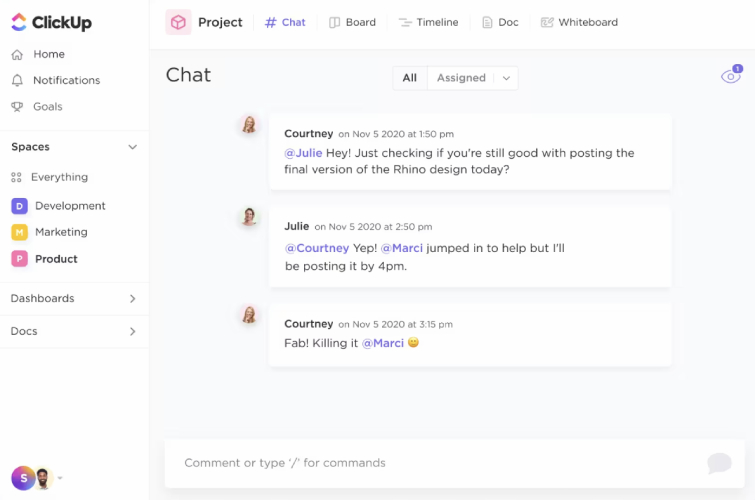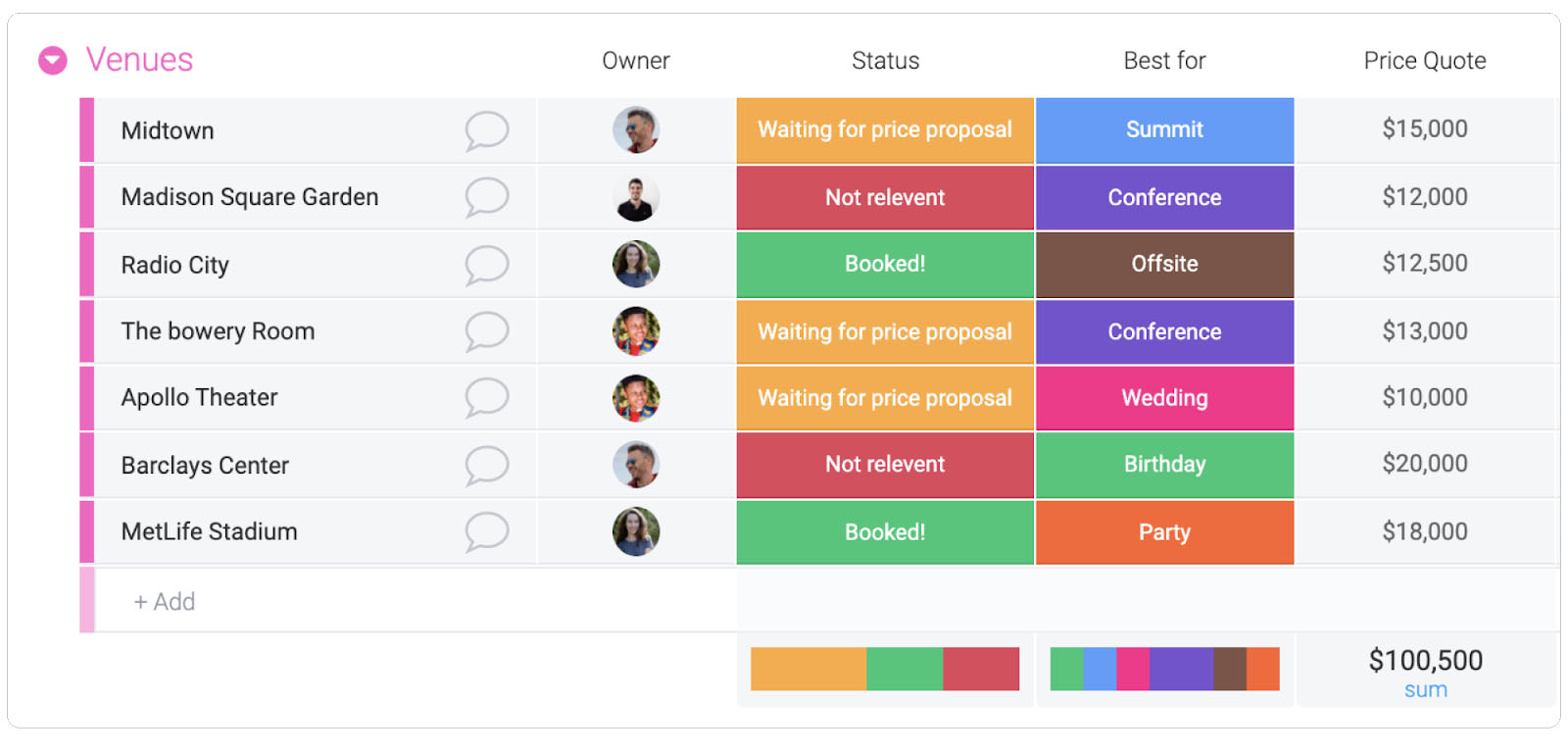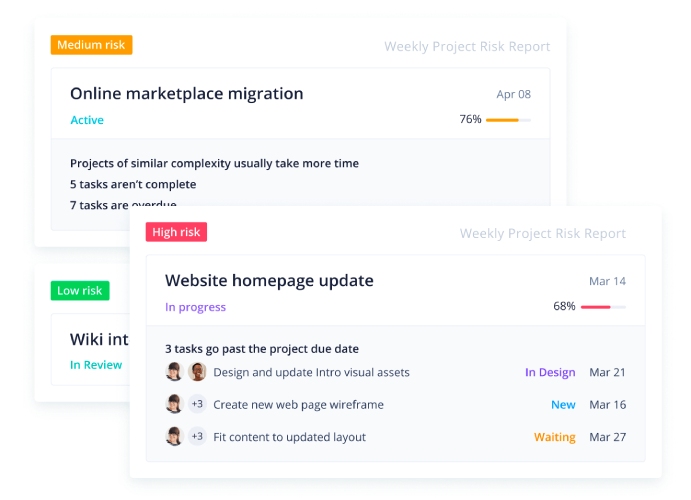The year 2024 is creating multiple opportunities as well as challenges for the project management industry. Project professionals put more emphasis on soft skills, more companies rely on Agile methods, and the global market for project management software is seeing a steady rise. Continue reading as we showcase the latest project management statistics and discover how project teams are adapting to the latest project trends.
Project Management Performance Statistics
A successful project performance requires a well-trained staff, good communication, and the right choice of project methodology. The following project performance statistics demonstrate the importance of good project management.
1. Project professionals spend 46% of their professional development hours on technical skills
(Source: Project Management Institute)
Along with technical skills, soft skills like communication, leadership, and problem-solving are proving essential for project professionals. However, talent decision-makers spend more than their annual budget (51%) on technical skills like collaboration tools, efficiency, and Agile practices. Meanwhile, only 25% goes for training and development of soft skills.
2. 55% of Agile teams list cross-collaboration as their best practice
(Source: State of Agile)
Study shows that high levels of cross-collaboration and communication are evident among high-performing Agile teams. They are satisfied with Agile practices because of increased collaboration and visibility in their work. They also demonstrate people-centric values and leadership empowerment.
3. Over 65% of organizations use Agile methodologies
(Source: PM Solutions and State of Agile)
Agile is the dominant project management approach of many organizations, while half are mixing Agile with other approaches like waterfall and iterative. It remains the most popular methodology due to its simple and flexible structure—allowing teams to work quickly through a collaborative effort while being able to adapt to changing requirements.
Invest in agile project management with Wrike. Improve cross-collaboration and project delivery with automated workflows and artificial intelligence. |

|
4. 52% of respondents reported that adopting Agile methods improved their individual project delivery capability
(Source: AIPM x KPMG)
Successful adoption of Agile methodologies remains a challenge for organizations due to concerns about the delivery of Agile approaches and leadership commitment. Interestingly, individual employees reported that adopting Agile methods like Kanban and Scrum had improved their project delivery capability. This reflects the need and reliance for employees to promote the benefits of Agile approaches to organizations.
5. 94% of employees feel that cross-team visibility improves productivity
(Source: Project.co)
Visibility is a critical factor in project management as it ensures transparency, information sharing, and seamless communication. Teams heavily rely on shared dashboards and regular status reports to get quick and comprehensive updates as the project progresses.
Jira is one of our best project management software solutions that supports any Agile methodology, whether scrum, Kanban, or a mixed approach. You can plan, manage, and track projects with Agile boards, control charts, custom workflows, and issue tracking.

Jira’s Kanban boards provide full visibility into the project status. (Source: Jira)
Key Takeaways:
- Organizations should place a stronger emphasis on power skills like strategic thinking and problem-solving. This leads to higher organizational agility when faced with complex project challenges.
- Investing in Agile tools and practices benefits not only the individuals involved but also the entire organization.
Project Management Industry Statistics
The need to improve project management processes and efficiency is attributed to the growing project management market. Learn about the state of the project management sector by looking at the project management industry trends below.
6. The global project portfolio management market was valued at $4.80 billion in 2022
(Source: Grand View Research)
The widespread use of project portfolio management (PPM) solutions for remote project monitoring led to a significant increase in its market growth, with a value of $4.80 billion in 2022.
The project management software market share is poised to expand considerably in the forecast period (2023 to 2030), thanks to the growing trend of the bring your own device (BYOD) policy.
7. 71% of organizations have a project management office (PMO)
(Source: PM Solutions)
PMOs have created a strategic impact in building project management standards across an organization. While they are not as utilized as before, most mid-size and large organizations now have a PMO, consisting of highly experienced staff with around 10 years of experience. They perform a variety of functions, but the top activities include the facilitation of resources, enabling the consistent use of project policies, and communicating strategic work.
Key Takeaway:
- The rising trend of PMOs and PPM solutions highlights the importance of adopting the latest project management tools and best practices in handling the demands of the industry.
Project Communication Statistics
Every aspect of project management benefits from effective communication. It ensures transparency, improves team alignment, and allows projects to run smoothly. Here are some project management stats related to team communication:
8. 68% of project professionals view communication as the most critical skill to develop
(Source: Project Management Institute)
Across nearly all industries, communication is the most important power skill to possess. This is followed by problem-solving (65%), collaborative leadership (62%), and strategic thinking (58%). According to the Project Management Institute, companies should focus on hiring relationship builders to bring more value to project management-oriented positions.
9. 15% of employees use a project management tool to primarily communicate with colleagues
(Source: Project.co)
Despite the availability of instant messaging channels, email remains the most widely used tool (31%) for team communication. This is followed by 30% who use online chat platforms like Slack. Employees mostly use a project management tool for communication if they want to have a good understanding of what others are working on.
The best team management apps, like ClickUp, are equipped with built-in collaboration tools to help multiple users coordinate within their project boards. Real-time chat brings team communication under one roof, along with links, videos, and file attachments. A free version is available, while monthly plans start at $10 per user.

Add teammates to work conversations and use @mentions to tag recipients. (Source: ClickUp)
Key Takeaways:
- Project professionals should dedicate themselves to improving their communication skills to elevate their leadership qualities and career opportunities.
- Project management software users should take advantage of its built-in communication features to lessen app switching.
Project Management Software Statistics
Project management software evolves constantly with the emergence of digital innovations and new project approaches. While its benefits are boundless, there are still companies unaware of its positive impact on project success. The following statistics reveal how people are embracing project management tools.
10. Only 35% of teams report using project management software to do their job
(Source: Smartsheet)
The primary role of project management software is to support various projects and tasks that teams undertake. However, surveys show that it is underutilized, causing massive missed opportunities for organizations in terms of time, money, and source savings. Meanwhile, 78% of those who have dedicated project management software report that their company supports work-life balance.
11. Only 34% of businesses use a project time-tracking tool
(Source: Project.co)
Time tracking tools aren’t limited to tracking hours spent completing a project; they also help manage project capacity and plan a realistic workflow for the team. Despite these advantages, 15% of businesses that bill clients based on time spent on projects aren’t tracking time at all, while 60% of those who do track the time aren’t using data for project efficiency.
12. 44% of employees don’t use project management software to keep their deadlines visible
(Source: Project.co)
Almost half of project teams stick to using communication tools and spreadsheet applications because of the basic project management features present in their platforms. However, this naturally makes it difficult to manage and meet deadlines. With dedicated project management software, teams get a clear and comprehensive view of all tasks and projects in one place.
13. Only 35% of employees use task management software to manage their to-do lists
(Source: Project.co)
When it comes to managing daily work, people have different ways of listing their tasks. Only 35% use an actual task management tool, 40% do it manually on paper, and 11% plan their day on a spreadsheet, while the remaining 10% use a notes app or a word processor.
Task management solutions are more than just a simple online to-do list because they have advanced tools to manage various tasks in one place. monday.com is our best task management software due to its rich customization options and ease of use. Easily drag and drop tasks, set due dates, assign owners, and track the time it takes to finish a task.

monday.com is known for its spreadsheet-like boards with color-coded columns. (Source: monday.com)
Key Takeaways:
- The best way to maximize the benefits of project management is to invest in project management (PM) software to organize daily workflows and enhance the chances of project success.
- PM software encompasses various project management functionalities, such as time tracking, deadline reminders, and to-do lists.
Project Failure Statistics
Every year, companies lose millions of dollars as a result of poor project management. Project failures caused major challenges from insufficient budget, repetitive work, and missed deadlines. Here are some project failure statistics you should be aware of:
14. 91% of employees say their company is facing project management challenges
(Source: Smartsheet)
Nearly all project teams experience similar pain points around project management. These challenges vary from being shuffled from one project to another (45%), remote working (40%), and extended leave (34%). Of those who experience these challenges, 85% report they feel overwhelmed by deadlines and project pace.
15. 53% of employees still rely on manual processes to send updates to project teams
(Source: Smartsheet)
With so much automation being built for project management, more than half of organizations still rely on manual work. Interestingly, workers look forward to spending less time on manual, repetitive tasks like data entry and want to allocate time to more rewarding aspects of their work.
16. Duplicated work takes 37% of the most commonly reported project issues
(Source: Smartsheet)
In project management, middle work involves establishing workflows, communicating with the team, and completing smaller tasks. Dysfunctional middle work is one of the biggest hurdles to project success. Common issues include duplicating tasks that have already been done (37%), getting rid of irrelevant work (27%), and providing inaccurate information (23%).
17. 47% of employees lack access to real-time project metrics
(Source: Wellingtone)
Project managers need access to accurate and up-to-date project key performance indicators (KPIs) to properly allocate resources and set an accurate project timeline. However, nearly half of project professionals don’t have access to real-time KPIs, with 50% spending more than one day manually collating project reports.
18. Only 34% of organizations complete projects within budget
(Source: Wellingtone)
A good project budget is key to project management success. It is one of the three essential elements of any successful project. But 34% of organizations report that they mostly complete projects on budget—a 10% drop from the previous year.
19. 80% of U.S. employees found themselves managing a project even if it’s not part of their job title
(Source: Smartsheet)
It’s increasingly likely for employees to handle any kind of project-based work, whether or not they have proper tools and formal training, or even a “project manager” in their title or job description. While almost every person today can manage projects, it doesn’t mean that everyone has equal project management experience. These people are also more likely to feel overwhelmed by deadlines.
20. One-third of project managers don’t regularly engage with project risk management
(Source: Wellingtone)
Risk management is one of the most valuable yet the most neglected areas of project management. Most project managers would rather devote time to the actual project itself instead of thinking about the probability of project risk. In reality, proper risk identification contributes to project success by helping managers make calculated decisions about a project’s performance.
Project risk management platforms like Wrike use machine learning technology to save time and effort in predicting and explaining project delays. Get detailed alerts and real-time insights to take on the right initiatives at the best time.

Wrike uses project risk indicators so you can stay alert of at-risk projects. (Source: Wrike)
Key Takeaway:
- Having project management software enables teams to overcome any project failure concerning budget, manual processes, and duplicate tasks. It consists of multiple elements, including tasks, risk planning, budget tracking, and workflow automation.
Frequently Asked Questions (FAQs)
The project management (PM) trends of 2024 emphasize soft skills, hybrid methodologies, and intelligent platforms. Soft skills such as collaborative leadership are becoming increasingly important to effectively manage project teams across different locations. Hybrid methods combine multiple PM approaches to suit the specific needs of a project. PM software integrated with artificial intelligence (AI) is more in demand to improve project management efficiency.
There are numerous project management key performance indicator (KPI) types, and every project has its unique measurement. However, there are certain KPIs that most project teams use to measure quality, timeliness, budget, and effectiveness. These include on-time completion, planned value, cost performance index, and budget variance.
Based on recent statistics, Agile methods have a 64% higher success rate compared to the waterfall method, which is 49%. Still, it is worth noting that the success of Agile methodologies depends on the context in which it is applied.
Bottom Line
Knowing the latest project management statistics not only keeps you up to date on the state of the industry but also helps you make well-informed decisions for your projects. Combined with the right tools and methodologies, project managers can take on more complex projects on time and on budget.
If you’re ready to start your journey as a project manager, check out our project management guide for small businesses to learn about its benefits, key features, and top software providers.